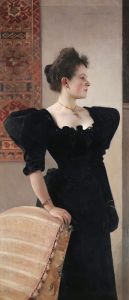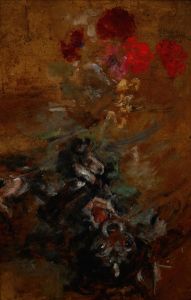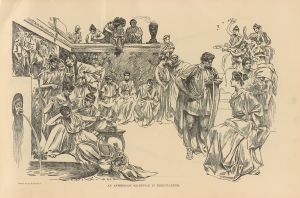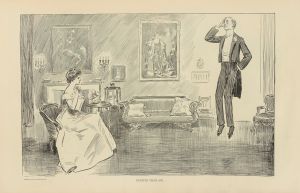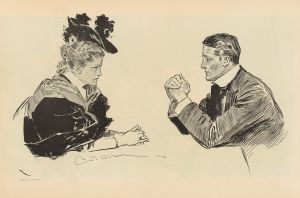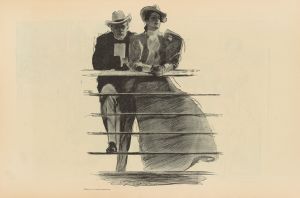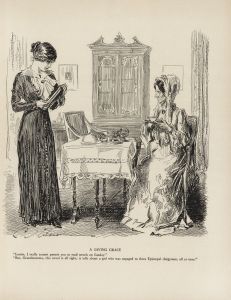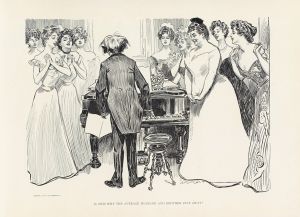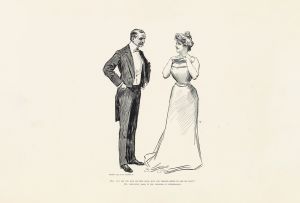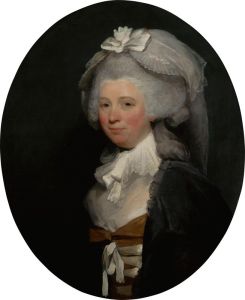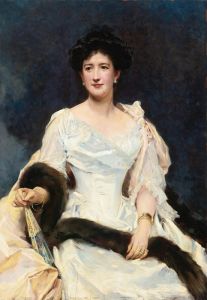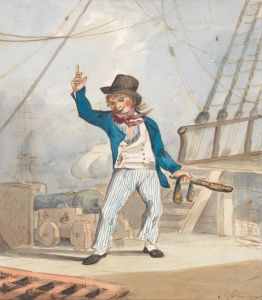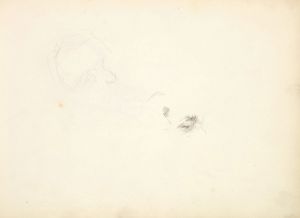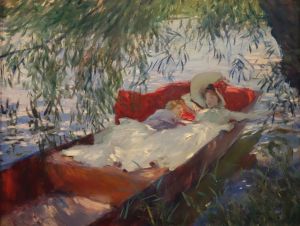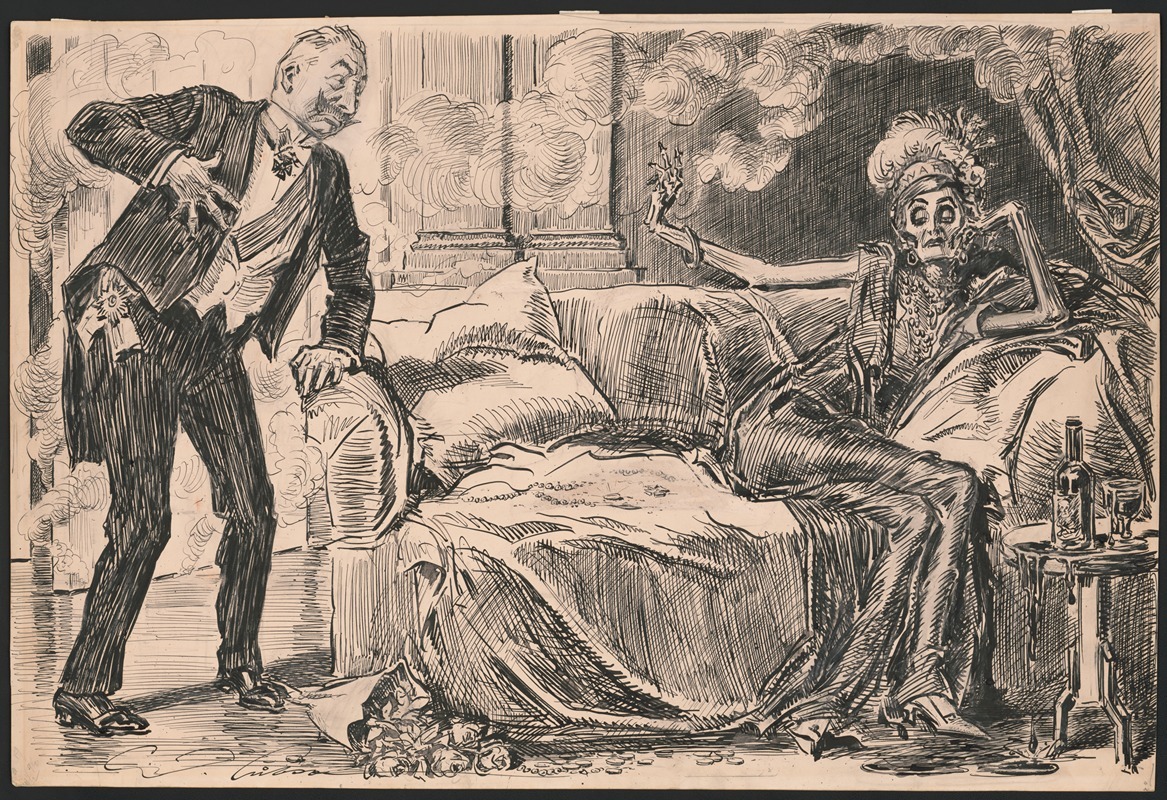
And the fool, he called her his lady fair
A hand-painted replica of Charles Dana Gibson’s masterpiece And the fool, he called her his lady fair, meticulously crafted by professional artists to capture the true essence of the original. Each piece is created with museum-quality canvas and rare mineral pigments, carefully painted by experienced artists with delicate brushstrokes and rich, layered colors to perfectly recreate the texture of the original artwork. Unlike machine-printed reproductions, this hand-painted version brings the painting to life, infused with the artist’s emotions and skill in every stroke. Whether for personal collection or home decoration, it instantly elevates the artistic atmosphere of any space.
"And the fool, he called her his lady fair" is an illustration by the American artist Charles Dana Gibson, who is best known for his creation of the iconic "Gibson Girl." This particular work is part of Gibson's extensive portfolio of pen-and-ink drawings that captured the social dynamics and cultural attitudes of the late 19th and early 20th centuries.
Charles Dana Gibson was born on September 14, 1867, in Roxbury, Massachusetts. He studied at the Art Students League of New York and began his career as an illustrator in the late 1880s. Gibson's work gained widespread popularity through publications such as Life, Harper's Weekly, and Scribner's, where his illustrations were regularly featured.
The "Gibson Girl" became a cultural phenomenon, representing the idealized American woman of the time. She was depicted as independent, confident, and stylish, often involved in various social activities. This character was a significant departure from previous representations of women, and she played a crucial role in shaping the public's perception of femininity during the Progressive Era.
"And the fool, he called her his lady fair" is one of Gibson's many illustrations that explore themes of romance, social status, and gender roles. The drawing typically features a young woman, elegantly dressed, accompanied by a man who appears to be infatuated with her. The title suggests a sense of irony, as the term "fool" implies that the man's admiration may be misplaced or unreciprocated. This theme of unrequited love or misguided affection is a common motif in Gibson's work, reflecting the complexities of romantic relationships during that period.
Gibson's illustrations are characterized by their detailed line work and expressive characters. He had a keen eye for fashion and social nuances, which he skillfully incorporated into his drawings. His ability to capture the subtleties of human interaction made his work resonate with a broad audience, contributing to his lasting legacy in American art and illustration.
Throughout his career, Gibson's work continued to evolve, but he remained consistent in his portrayal of societal themes. His illustrations not only provided entertainment but also offered commentary on the changing roles of men and women in society. By the time of his death on December 23, 1944, Gibson had left an indelible mark on the world of illustration, and his works remain influential to this day.
In summary, "And the fool, he called her his lady fair" is a notable example of Charles Dana Gibson's talent for capturing the social dynamics of his time. Through his detailed and expressive illustrations, Gibson provided a window into the cultural attitudes and romantic ideals of the late 19th and early 20th centuries, solidifying his place as a significant figure in American art history.





